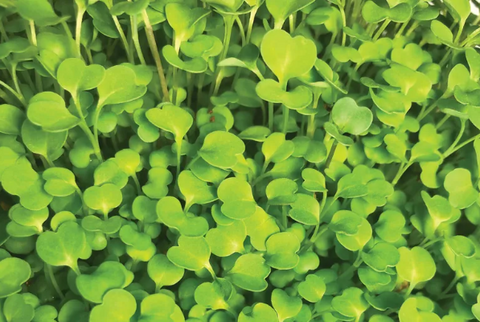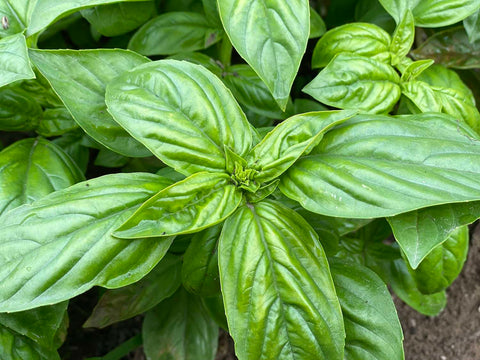Gardening enthusiasts often extol the virtues of raised garden beds for their numerous benefits. However, to truly reap the rewards of these elevated plots, one must understand the pivotal role of soil preparation. In this article, we delve into the intricacies of soil preparation for raised garden beds, offering insights, tips, and tricks to optimize your gardening experience.
- Understanding Raised Garden Beds
- Benefits of Raised Garden Beds
- Importance of Soil Preparation
- Tips for Soil Preparation
- Tricks for Effective Soil Preparation
- Tools for Soil Preparation
- Common Mistakes to Avoid
- Addressing Specific Soil Issues
- Maintenance Tips for Raised Garden Beds
- Sustainable Practices for Soil Health
- Conclusion
Understanding Raised Garden Beds
Raised garden beds are elevated planting areas built above the ground, typically framed with materials like wood, metal, concrete, or fabric. They serve to create contained growing spaces that offer several advantages over traditional in-ground gardening.

Types of Raised Garden Beds
- Wooden: Classic and versatile, wooden raised beds offer aesthetic appeal and can be easily customized to fit any space.
- Metal: Durable and modern, metal raised beds provide longevity and resistance to rotting.
- Concrete: Sturdy and permanent, concrete raised beds are ideal for long-term gardening projects.
- Fabric: Portable and lightweight, fabric raised beds offer convenience and flexibility for temporary gardening setups.
Benefits of Raised Garden Beds
Improved Drainage
Elevated soil in raised beds facilitates better drainage, preventing waterlogging and root rot, particularly in areas with heavy rainfall or compacted soil.
Better Soil Quality
By allowing gardeners to fill them with high-quality soil mixes, raised beds ensure optimal growing conditions with improved texture, fertility, and nutrient availability.
Weed Control
The contained environment of raised beds makes weed management more manageable, reducing competition for nutrients and minimizing the need for herbicides.
Accessibility
Raised beds elevate plants to a more accessible height, making gardening tasks such as planting, watering, and harvesting easier on the back and knees.
Extended Growing Seasons
The elevated design of raised beds promotes soil warming, enabling earlier planting in spring and prolonging the growing season well into fall, enhancing overall productivity.
Importance of Soil Preparation
Ensuring Optimal Growing Conditions
Proper soil preparation is crucial for creating an environment conducive to plant growth, maximizing yields, and minimizing potential problems throughout the growing season.
Preventing Soil Compaction
Loosening and aerating the soil before planting helps prevent compaction, ensuring healthy root development and efficient nutrient uptake.
Balancing Soil pH
Testing and adjusting soil pH levels within the optimal range for specific crops promote nutrient availability and prevent nutrient deficiencies or toxicities.
Adding Organic Matter
Incorporating compost, manure, or other organic amendments enriches the soil with essential nutrients, improves structure, and fosters beneficial microbial activity.
Testing Soil Quality
Conducting soil tests to assess nutrient levels, pH, and texture guides soil amendment decisions, tailoring preparations to the specific needs of your plants.
Tips for Soil Preparation
Clearing the Area
Begin by removing any existing vegetation, weeds, or debris from the designated garden bed area to create a clean slate for planting.
Loosening the Soil
Using a garden fork or tiller, loosen the soil to a depth of at least 8-12 inches, breaking up compacted layers and improving overall soil structure.
Adding Compost and Organic Matter
Incorporate generous amounts of compost, aged manure, or other organic matter into the soil to enhance fertility, moisture retention, and microbial activity.

Testing Soil pH
Utilize soil testing kits to determine the pH of your soil and amend accordingly with lime to raise pH or sulfur to lower pH as needed for optimal plant growth.
Mulching
Apply a layer of organic mulch, such as straw or wood chips, to the soil surface to conserve moisture, suppress weeds, and regulate soil temperature.
Tricks for Effective Soil Preparation
Companion Planting
Strategically interplanting compatible crops can enhance soil fertility, deter pests, and promote overall garden health through symbiotic relationships.
Intercropping
Mixing different plant species within the same raised bed maximizes space utilization, minimizes pest and disease pressures, and enhances biodiversity.
Using Cover Crops
Sowing cover crops like clover or rye during fallow periods rejuvenates soil health by adding organic matter, suppressing weeds, and preventing erosion.
Vermicomposting
Introducing earthworms into raised beds through vermicomposting enriches the soil with nutrient-rich castings, improving soil structure and fertility.
Implementing Crop Rotation
Rotating crops annually helps prevent nutrient depletion, minimize pest and disease buildup, and maintain soil balance for long-term garden productivity.
Tools for Soil Preparation
Spade or Shovel
Essential for digging, turning, and moving soil, a sturdy spade or shovel is indispensable for initial bed preparation and ongoing maintenance.
Garden Fork
Ideal for aerating compacted soil and incorporating amendments, a garden fork helps improve soil structure without disrupting soil layers excessively.
Soil Testing Kits
Investing in a soil testing kit enables gardeners to accurately assess soil fertility, pH, and nutrient levels, guiding informed decisions on soil amendments.
Compost Bin or Pile
Maintaining a compost bin or pile allows gardeners to recycle organic waste into nutrient-rich compost, enriching the soil and reducing reliance on synthetic fertilizers.
Mulching Tools
Whether it's a rake, pitchfork, or garden hoe, having the right tools for applying and spreading mulch ensures efficient coverage and maximum benefits for your garden beds.
Common Mistakes to Avoid
Overlooking Soil Quality
Neglecting to assess and improve soil quality before planting can lead to poor plant growth, nutrient deficiencies, and disappointing yields.
Ignoring Soil pH
Failure to address imbalanced soil pH can hinder nutrient availability, leading to stunted growth, nutrient deficiencies, or toxicities in plants.
Using Chemical Fertilizers Excessively
Excessive use of synthetic fertilizers can disrupt soil ecology, harm beneficial soil organisms, and contribute to environmental pollution and nutrient runoff.
Neglecting Mulching
Skipping mulching deprives the soil of valuable moisture retention, weed suppression, and temperature regulation benefits, increasing maintenance needs and reducing plant health.
Skipping Soil Testing
Foregoing soil testing deprives gardeners of vital information needed to tailor soil preparations and amendments to the specific needs of their plants, risking suboptimal growth and yield.
Addressing Specific Soil Issues
Compacted Soil
Combat soil compaction by incorporating organic matter, aerating with a garden fork, and practicing no-till gardening techniques to improve soil structure and drainage.

Poor Drainage
Amend heavy clay soils with sand or perlite to improve drainage, or elevate beds further to prevent waterlogging and promote healthy root development.
Soil Erosion
Prevent soil erosion by planting cover crops, installing retaining walls, or using mulch to protect the soil surface from wind and water erosion.
Nutrient Deficiencies
Address nutrient deficiencies by adding organic amendments, such as compost or aged manure, or applying targeted fertilizers based on soil test recommendations.
Pest Infestations
Combat pest infestations through integrated pest management strategies, such as beneficial insect habitat creation, companion planting, and physical barriers like row covers.
Maintenance Tips for Raised Garden Beds
Regular Watering
Monitor soil moisture levels and water raised beds consistently to meet the needs of your plants, adjusting frequency and volume based on weather conditions and plant growth stages.
Weeding
Regularly inspect raised beds for weeds and promptly remove them to prevent competition for nutrients and space, keeping your garden beds tidy and productive.
Mulch Replenishment
Periodically replenish mulch layers to maintain weed suppression, moisture retention, and soil temperature regulation benefits throughout the growing season.
Soil Testing and Amending
Conduct soil tests annually to assess nutrient levels and pH, amending soil as needed to ensure optimal growing conditions for your plants.
Inspecting for Pests and Diseases
Vigilantly inspect plants for signs of pests or diseases, taking proactive measures such as pruning affected foliage, applying organic pest controls, or removing infected plants to prevent spread.
Sustainable Practices for Soil Health
Composting Kitchen Waste
Recycle kitchen scraps into compost to enrich soil fertility, reduce waste, and close the nutrient cycle in your garden ecosystem.
Implementing No-Till Gardening
Adopting no-till gardening techniques minimizes soil disturbance, preserves soil structure, and promotes beneficial soil organisms, enhancing long-term soil health and productivity.
Using Organic Fertilizers
Choose organic fertilizers derived from natural sources to nourish your plants without harmful chemical residues, supporting soil health and environmental sustainability.
Planting Native Species
Selecting native plant species adapted to your local climate and soil conditions reduces water and maintenance requirements while promoting biodiversity and ecosystem resilience.
Conserving Water Usage
Implement water-saving strategies such as drip irrigation, rainwater harvesting, and mulching to conserve water resources and promote sustainable gardening practices.
Conclusion
In conclusion, soil preparation lays the groundwork for success in raised bed gardening, offering a multitude of benefits ranging from improved soil structure and fertility to enhanced plant health and productivity. By understanding the importance of soil preparation and implementing the tips and tricks outlined in this article, gardeners can cultivate thriving raised bed gardens that yield bountiful harvests and contribute to a sustainable and enjoyable gardening experience.









